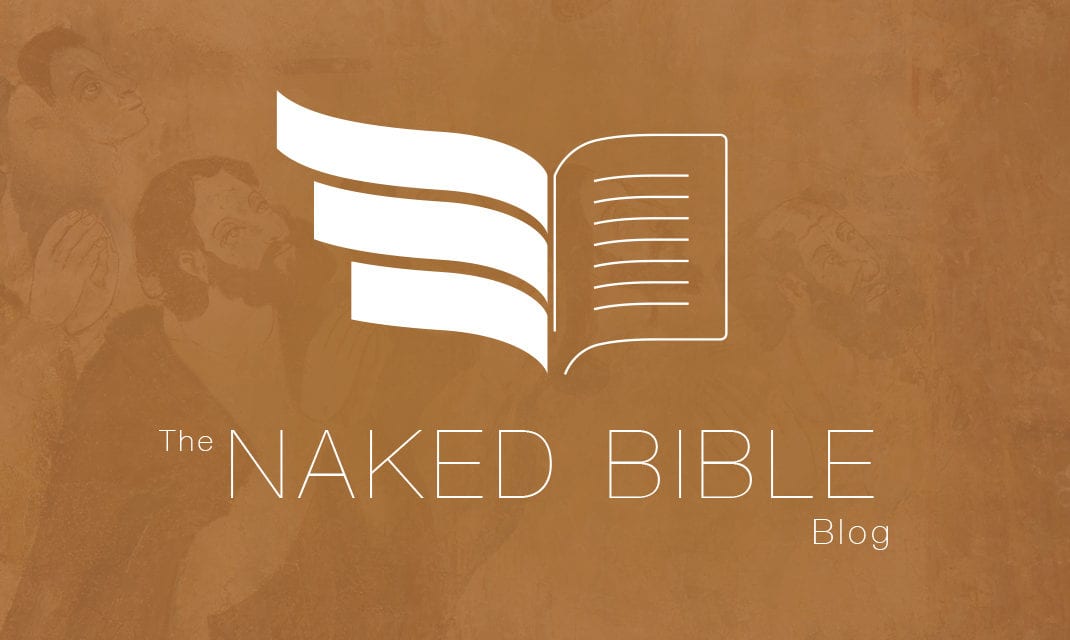Way back in September of 2010 I had posted a lecture I gave at church where I attempted to explain the real issue involved in translating Genesis 1:1-3. Rather than meanings of words like bara’, the real issue is the relationship of the clauses (and the nature of those clauses) in these first three verses. Since my talk was aimed at lay people with no knowledge of Hebrew, I tried to go easy. One of my doctoral classmates from the UW-Madison, Rob Holmstedt, provided a recent glimpse of the complexity involved. Rob’s stature as a Hebrew linguist and grammarian is rapidly rising, so I’m not offering this merely out of camaraderie. His post is very readable, even though it’s more involved than my baby-step lecture attempt. I’m hoping those able to follow that lecture will benefit from Rob’s summary of the issues.
The real point: Translations that differ from the traditional rendering many folks grew up with (and which affect the creation theology of the text) do not read the way they do because someone doesn’t like Ken Ham or Henry Morris or the gap theory. They read the way they do because of that thing evangelicals consider inspired: the text, given to us as it were with its own grammatical and syntactical rules and framework.





I wonder if this lingual scholarship sides with, against or is neutral relating to John Walton’s view that Gen 1:1-3 is largely a discussion of functional creation as opposed to original material creation?
It’s sort of peripheral in one sense – nothing Walton says in terms of his cosmological approach is hindered – but one could say it “helps” Walton in the sense that it deflects attention away from viewing the passage as a linear chronology for the purpose of a “scientific” approach to interpreting the passage.
Thanks for the link, Mike. Our traffic tripled in the last 2 days!
Gen 1.1-3 itself isn’t really that complex (IMHO), but slicing through the layers of built-up tradition imposed on this poor little snippet of text is. 🙂
True, but I’ve seen a lot of lost expressions on faces when talking about clauses and those sorts of things. Glad you got a traffic boost!
The Institute for Creation Research (young earth creationism) rescued me from a crisis of faith a couple of decades ago while in high school, and I’m forever grateful to them and Answers in Genesis (AiG). However, you’ve helped me contextualize scripture more appropriately, and frankly, it has made reading the bible infinitely more interesting.
The AiG people have written a lot on contextualizing the Nativity story; saying the word translated as “inn” means something like “spare room,” and is was unlikely Joseph and Mary arrived in Bethlehem on the night of her going into labor, and suggest they were staying with Joseph’s family, and gave birth to Jesus in the lower chamber, where the animals lived: interpretations derived from cultural and textual reasons. I find it interesting they contextualize the nativity stories within the culture and text, but not Genesis 1.
well, that may be because the nativity story (at least that element) is safer, or addresses a perceived apologetic need. The Genesis material doesn’t really help their mission (I presume they would say – I think it actually does and can in some ways, but that’s me).
Mike:
Given that I’ve felt of late very frustrated with Ken Ham and AiG, I’d be curious as to what you mean by this. Dunno if you’ve addressed it in a blog, but it would be cool to hear more.
I think I mentioned earlier posts. Here are the links:
http://michaelsheiser.com/TheNakedBible/2010/09/genesis-lecture-at-grace-church-in-bellingham/
http://michaelsheiser.com/TheNakedBible/2010/08/genesis-1-and-creationism/
Sorry, Mike, let me clarify. I’ve watched the Genesis lectures on Vimeo (blew my mind, opened my eye, etc.). Still trying to figure out if Genesis even addresses time between creation, Adam and Eve being exiled, and the start of “history” (dunno if it does or not…).
My point was:
“The Genesis material doesnt really help their mission (I presume they would say I think it actually does and can in some ways, but thats me”
how does the material actually help their mission? Just curious as to your take on it, seeing as parishioners of mine will undoubtedly wonder what their pastor believes and why. I’d love to give a coherent, biblical explanation. Thanks.
it removes the burden of trying to make Genesis conform to certain areas of science, like the millions of years issue. That is, since the Bible makes no such chronological claim in this regard, as you have indefinite time prior to God’s activity, there is no need to defend any such chronology.
Interesting. I was just in an online argument that touched on this. My opponent maintained that the christian God is an incoherent concept because, he claimed, the christian paradigm stated that sentience, intelligence, and intent, which requires time, did not exist prior to the creation but had to exist prior in order for God to have intent to create.
My rebuttal was that, no, the christian paradigm, defined as that which can be derived from the relevant text, does NOT actually make the claim that those things did not exist prior to the creation. Especially time, which i defined as simply cause and effect. I maintained that there was nothing barring a flow of cause and effect existing prior to the creation of our universe and nothing barring intelligence and sentience as existing as a part of God.
Man I wish I had seen this article then.
also correct him: HUMAN sentience, intelligence, and intent require these things — that is the ONLY type of those things the speaker has experienced because, well, he’s human. Since when is it sound thinking to apply criteria born out of human experience to God?